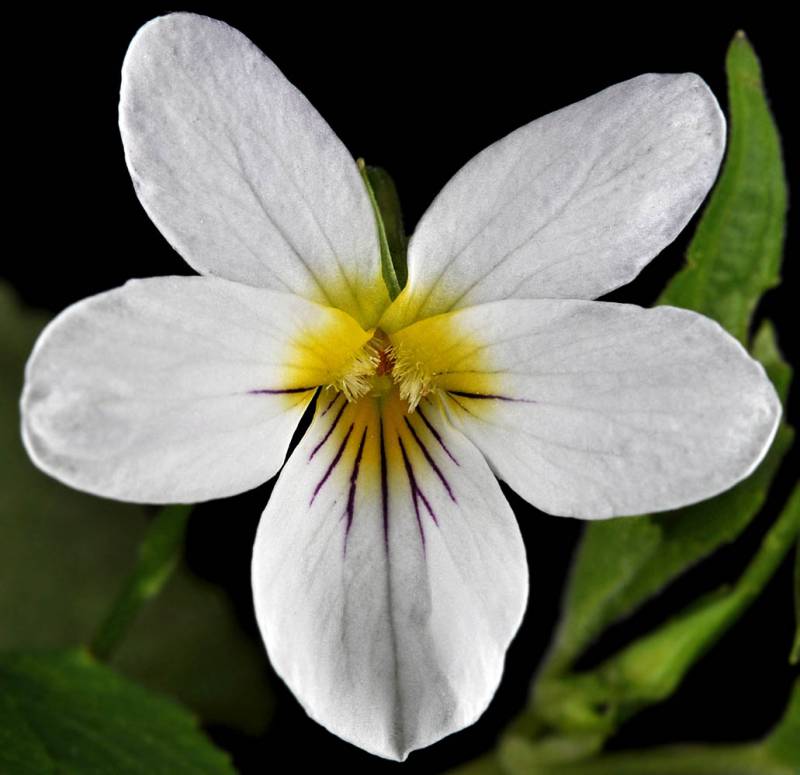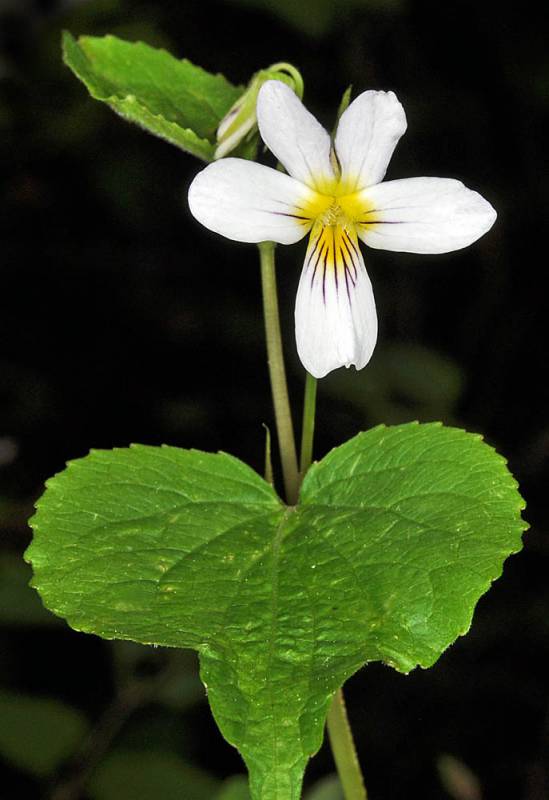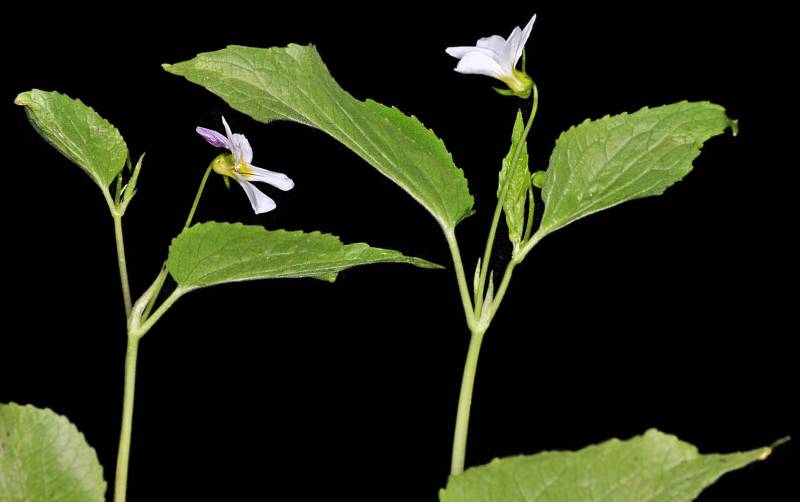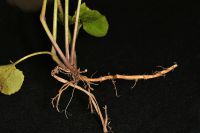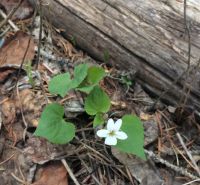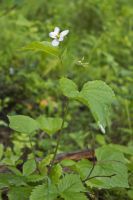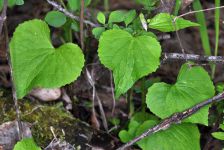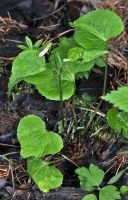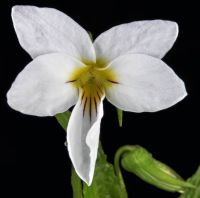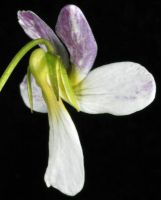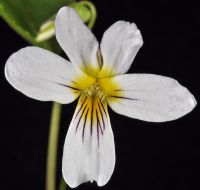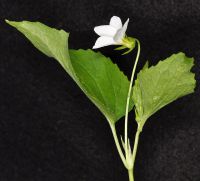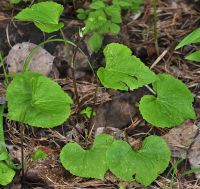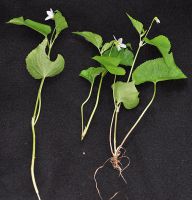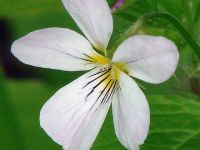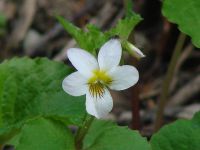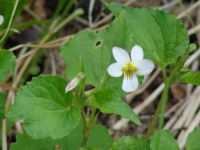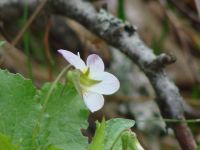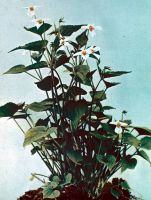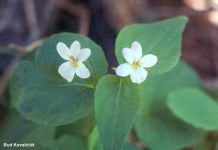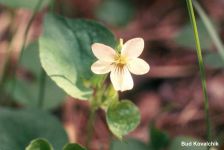Distribution: Occurring east of the Cascades crest in Washington; Alaska to Oregon, east to the Rocky Mountains, further east across North America to the Atlantic Coast.
Habitat: Forest openings, riparian zones, and thickets from low to middle elevations.
Flowers: May-July
Origin: Native
Growth Duration: Perennial
Conservation Status: Not of concern
Pollination: Bumblebees, bees, flies
Glabrous to puberulent perennial from short, thick rhizomes, with slender stolons, 1-4 dm. tall.
Leaf blades large, cordate and pointed, the petioles up to 3 dm. long; stipules lanceolate, entire, 1-2 cm. long.
Flowers from the upper portion of the stem, the peduncles shorter than the leaves, the spur short; sepals lanceolate, hairy; petals 1.5 cm. long, white with a yellow base, the 3 lower ones with purple penciling, all purplish tinged on the back; style head sparsely bearded.
Fruit a 3-valved capsule, ovary superior, placentation parietal, the seeds brownish.
Publication: Sp. Pl. 2: 936. 1753.
-
var. rugulosa – rugose violet
 Occurring east of the Cascades crest in Washington; Alaska to southeastern WA and northeastern Oregon, east to the Rocky Mountains, northern Great Plains, and Great Lakes region.
Occurring east of the Cascades crest in Washington; Alaska to southeastern WA and northeastern Oregon, east to the Rocky Mountains, northern Great Plains, and Great Lakes region.
PNW Herbaria: Specimen records of Viola canadensis in the Consortium of Pacific Northwest Herbaria database
WA Flora Checklist: Viola canadensis checklist entry
OregonFlora: Viola canadensis information
E-Flora BC: Viola canadensis atlas page
CalPhotos: Viola canadensis photos

